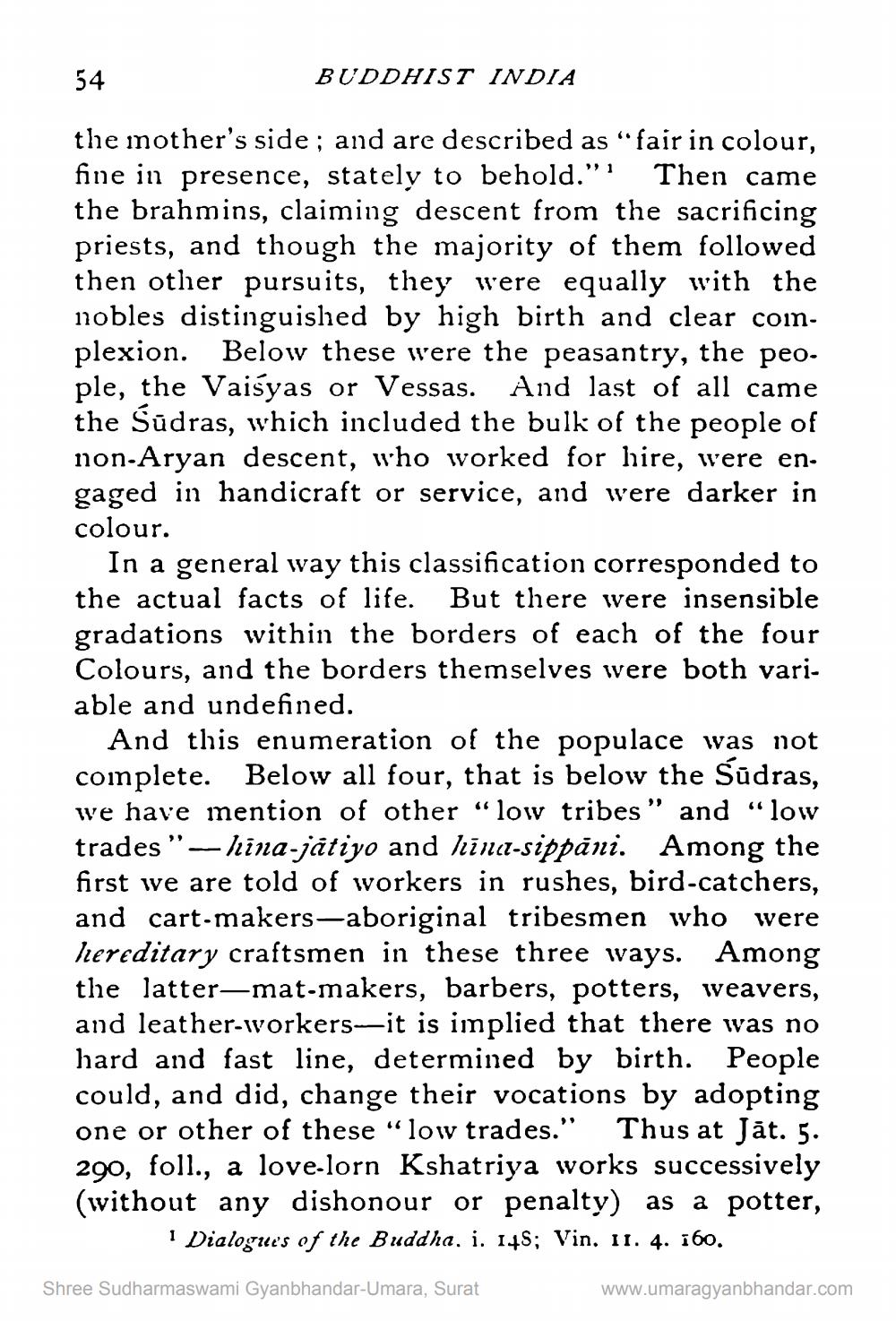________________
BUDDHIST INDIA
54
the mother's side; and are described as "fair in colour, fine in presence, stately to behold."" Then came the brahmins, claiming descent from the sacrificing priests, and though the majority of them followed then other pursuits, they were equally with the nobles distinguished by high birth and clear complexion. Below these were the peasantry, the peo. ple, the Vaisyas or Vessas. And last of all came the Sūdras, which included the bulk of the people of non-Aryan descent, who worked for hire, were engaged in handicraft or service, and were darker in colour.
In a general way this classification corresponded to the actual facts of life. But there were insensible gradations within the borders of each of the four Colours, and the borders themselves were both variable and undefined.
And this enumeration of the populace was not complete. Below all four, that is below the Sudras, we have mention of other "low tribes" and "low trades"—hina-jātiyo and hīna-sippāni. Among the first we are told of workers in rushes, bird-catchers, and cart-makers-aboriginal tribesmen who were hereditary craftsmen in these three ways. Among the latter-mat-makers, barbers, potters, weavers, and leather-workers-it is implied that there was no hard and fast line, determined by birth. People could, and did, change their vocations by adopting one or other of these "low trades." Thus at Jāt. 5. 290, foll., a love-lorn Kshatriya works successively (without any dishonour or penalty) as a potter, 1 Dialogues of the Buddha. i. 148; Vin. 11. 4. 160.
Shree Sudharmaswami Gyanbhandar-Umara, Surat
www.umaragyanbhandar.com




